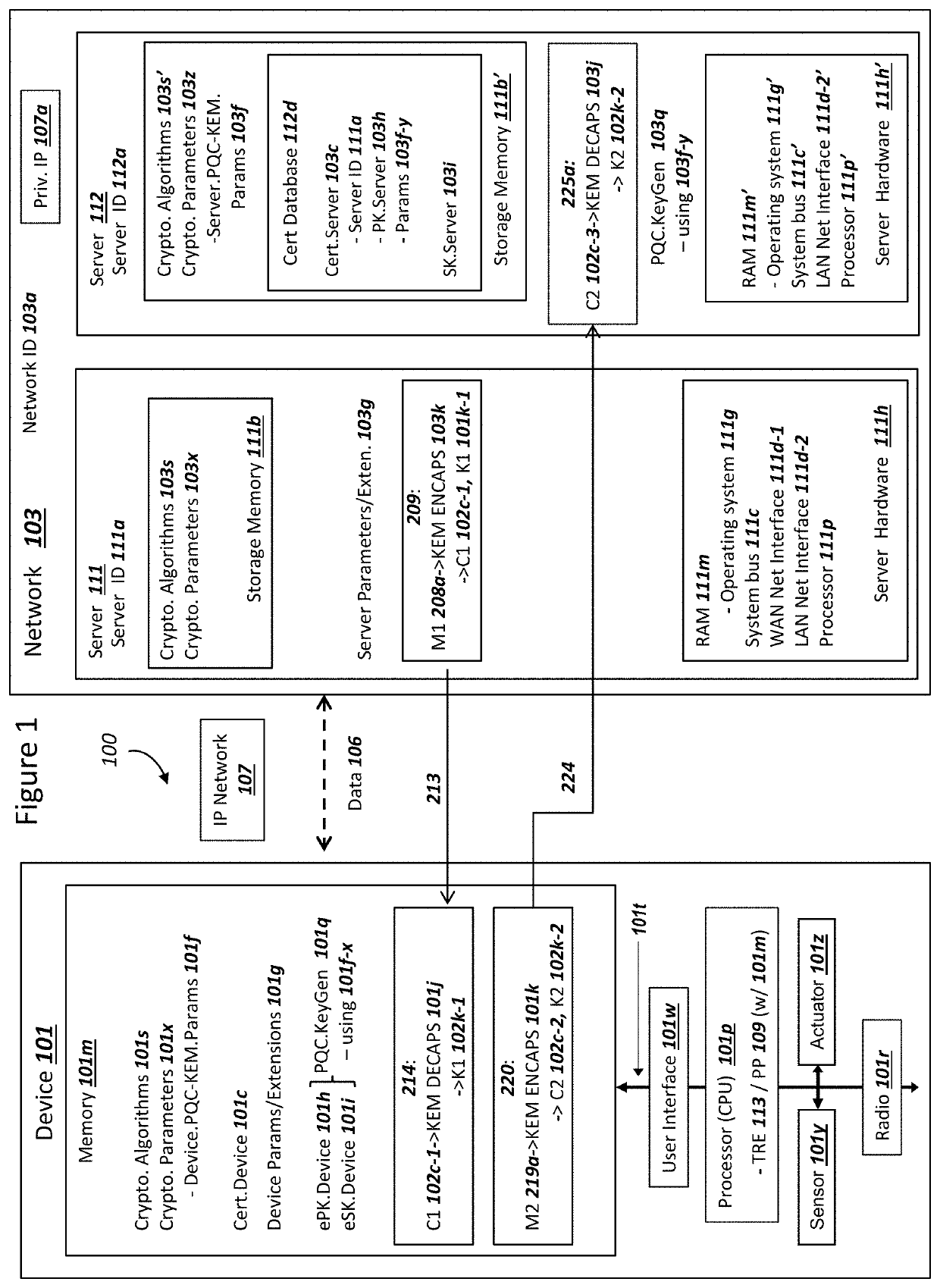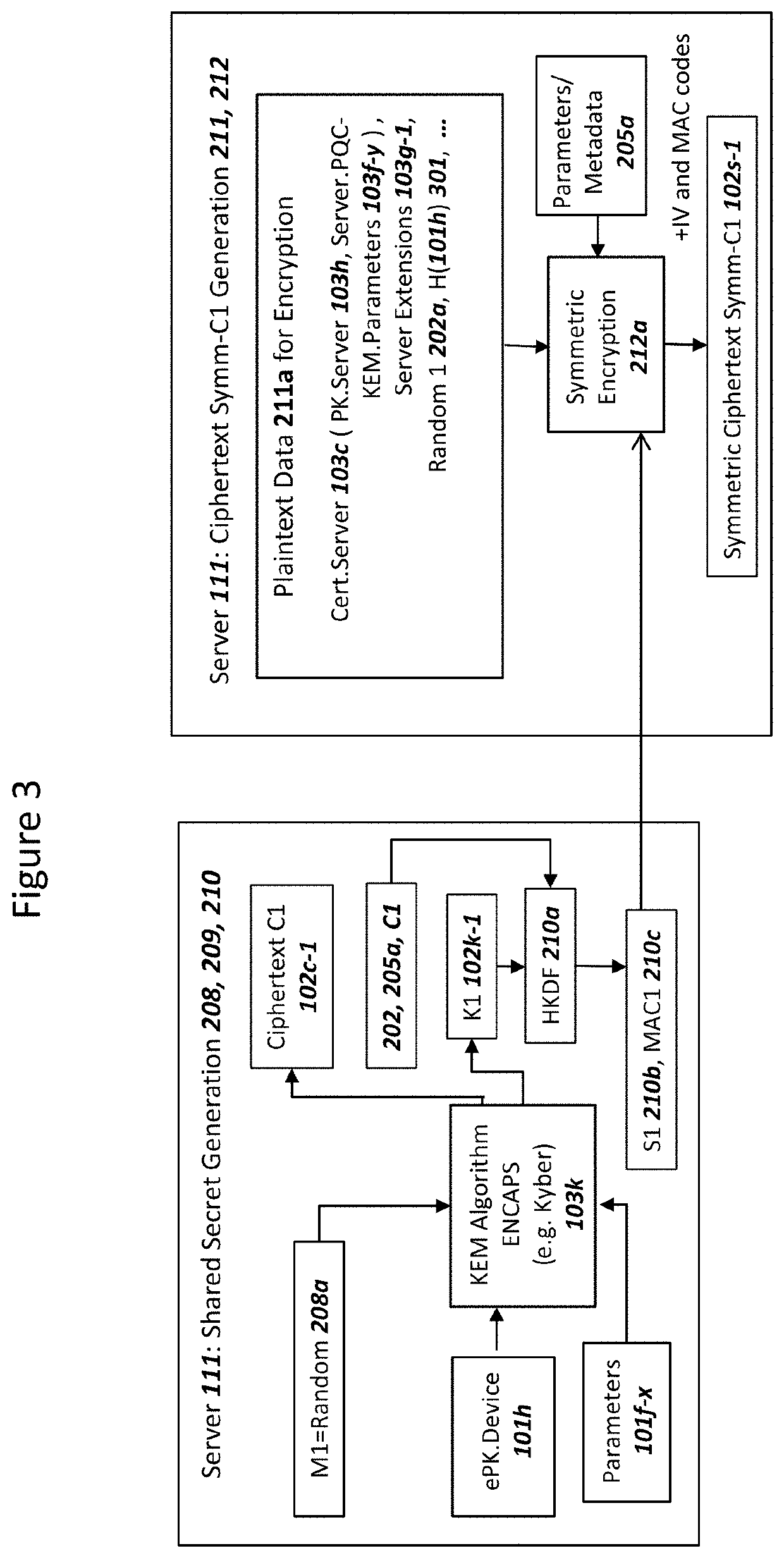Device Securing Communications Using Two Post-Quantum Cryptography Key Encapsulation Mechanisms
a technology of post-quantum cryptography and key encapsulation mechanism, which is applied in the field of devices and networks establishing secure communication using post-quantum cryptography key encapsulation mechanism, can solve the problems of significantly larger handshake traffic, not proven that lattice-based cryptography, code-based cryptography, or sike problems cannot be solved in polynomial time by classical computers or quantum computers, etc., to reduce concerns and uncertainty about migration, less long-term, and detailed study
- Summary
- Abstract
- Description
- Claims
- Application Information
AI Technical Summary
Benefits of technology
Problems solved by technology
Method used
Image
Examples
Embodiment Construction
[0045]FIG. 1
[0046]FIG. 1 is a graphical illustration of an exemplary system, where a device and a network process and communicate data in order to establish secure communications, in accordance with exemplary embodiments. The system 100 can include a device 101, an Internet Protocol (IP) network 107, and a network 103. The depicted nodes or entities can communicate data 106 over the IP network 107. Although a single device 101 and a single network 103 are depicted in FIG. 1, a system 100 can comprise a plurality of each of the depicted nodes or entities. A system 100 as depicted in FIG. 1 can support secure sessions between the device 101 and the network 103 such as, but not limited to, using a protocol for Transport Layer Security (TLS), Datagram Transport Layer Security (DLTS), a virtual private network (VPN) such as WireGuard, IP Security (IPSec), Secure Shell (SSH). Other possibilities exist as well for secure protocols supported between device 101 and network 103, without depar...
PUM
 Login to View More
Login to View More Abstract
Description
Claims
Application Information
 Login to View More
Login to View More - R&D
- Intellectual Property
- Life Sciences
- Materials
- Tech Scout
- Unparalleled Data Quality
- Higher Quality Content
- 60% Fewer Hallucinations
Browse by: Latest US Patents, China's latest patents, Technical Efficacy Thesaurus, Application Domain, Technology Topic, Popular Technical Reports.
© 2025 PatSnap. All rights reserved.Legal|Privacy policy|Modern Slavery Act Transparency Statement|Sitemap|About US| Contact US: help@patsnap.com



